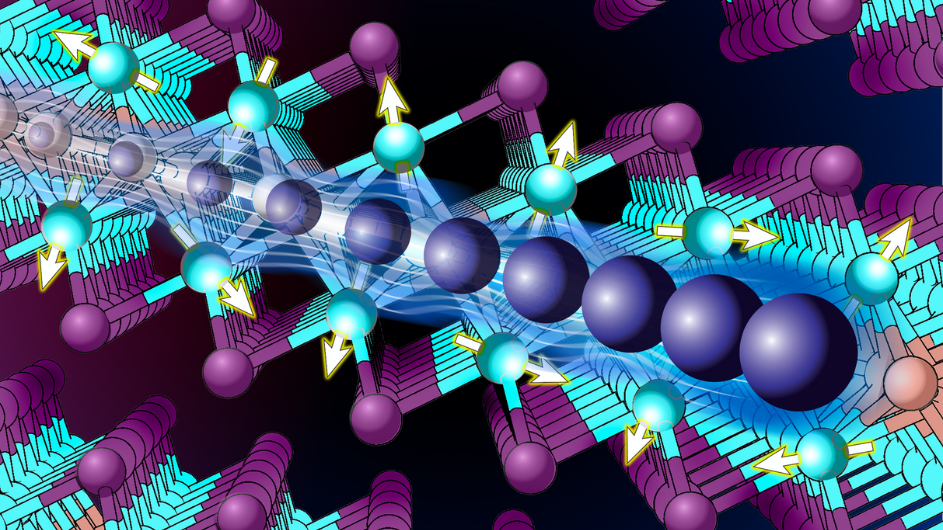Heavy fermions in a 2D van der Waals metal
A team of researchers has successfully synthesized the first 2D heavy fermion material. The new material is a layered intermetallic crystal composed of cerium, silicon, and iodine (CeSiI) 1.

Heavy fermion compounds are a class of materials with electrons that are up to 1000x heavier than usual. In these materials, electrons get tangled up with magnetic spins that slow them down and increase their effective mass. Such interactions are thought to play important roles in a number of enigmatic quantum phenomena, including superconductivity, the movement of electrical current with zero resistance.
Researchers have been exploring heavy fermions for decades, but in the form of bulky, 3D crystals. The new material will allow researchers to drop a dimension. CeSiI is a van der Waals crystal that can be peeled into layers that are just a few atoms thick. That makes it easier to manipulate and combine with other materials than a bulk crystal, in addition to possessing potential quantum properties that occur in 2D.
With its middle sheet of silicon sandwiched between magnetic cerium atoms, the researchers suspected that CeSiI, first described in a paper in 1998, might have some interesting electronic properties. Its first stop (after they figured out how to prepare the extremely air-sensitive crystal for transport) was a Scanning Tunneling Microscope (STM). With the STM, they observed a particular spectrum shape characteristic of heavy fermions. They then synthesized LaSiI, a non-magnetic equivalent to CeSiI and weighed the electrons of both materials via their heat capacities. CeSiI’s were heavier, thus confirming they had created a heavy fermion.
Additional experimental tests were done, including photoemission spectroscopy, electron transport measurements, and magnetic properties. Then theorists kicked in to help explain the observations.
From here, researchers will do what they do best with 2D materials: stack, strain, poke, and prod them to see what unique quantum behaviours can be coaxed out of them. CeSiI will be added to their arsenal of materials in the search for quantum criticality, the point where a material shifts from one unique phase to another. At the crossover, interesting phenomena like superconductivity may await.
Columbia’s Victoria Posey, first author, who has perfected the air-free synthesis techniques needed, is systematically replacing the atoms in the crystal—for example, swapping silicon for other metals, like aluminium or gallium—to create related heavy fermions with their own unique properties to study. What initially was thought as one-off, may blossom into a new kind of chemistry.
This text is an edited version of materials provided by Columbia Quantum Initiative.
References
- Victoria A. Posey, Simon Turkel, Mehdi Rezaee, Aravind Devarakonda, Asish K. Kundu, Chin Shen Ong, Morgan Thinel, Daniel G. Chica, Rocco A. Vitalone, Ran Jing, Suheng Xu, David R. Needell, Elena Meirzadeh, Margalit L. Feuer, Apoorv Jindal, Xiaomeng Cui, Tonica Valla, Patrik Thunström, Turgut Yilmaz, Elio Vescovo, David Graf, Xiaoyang Zhu, Allen Scheie, Andrew F. May, Olle Eriksson, D. N. Basov, Cory R. Dean, Angel Rubio, Philip Kim, Michael E. Ziebel, Andrew J. Millis, Abhay N. Pasupathy & Xavier Roy (2024) Two-dimensional heavy fermions in the van der Waals metal CeSiI Nature doi: 10.1038/s41586-023-06868-x ↩